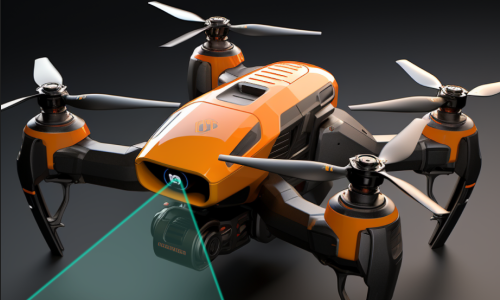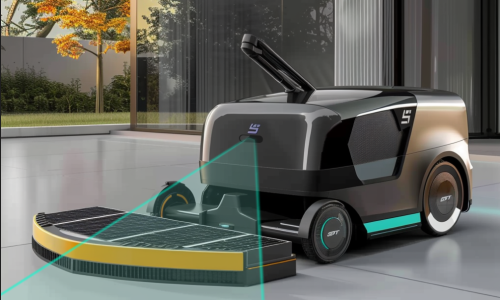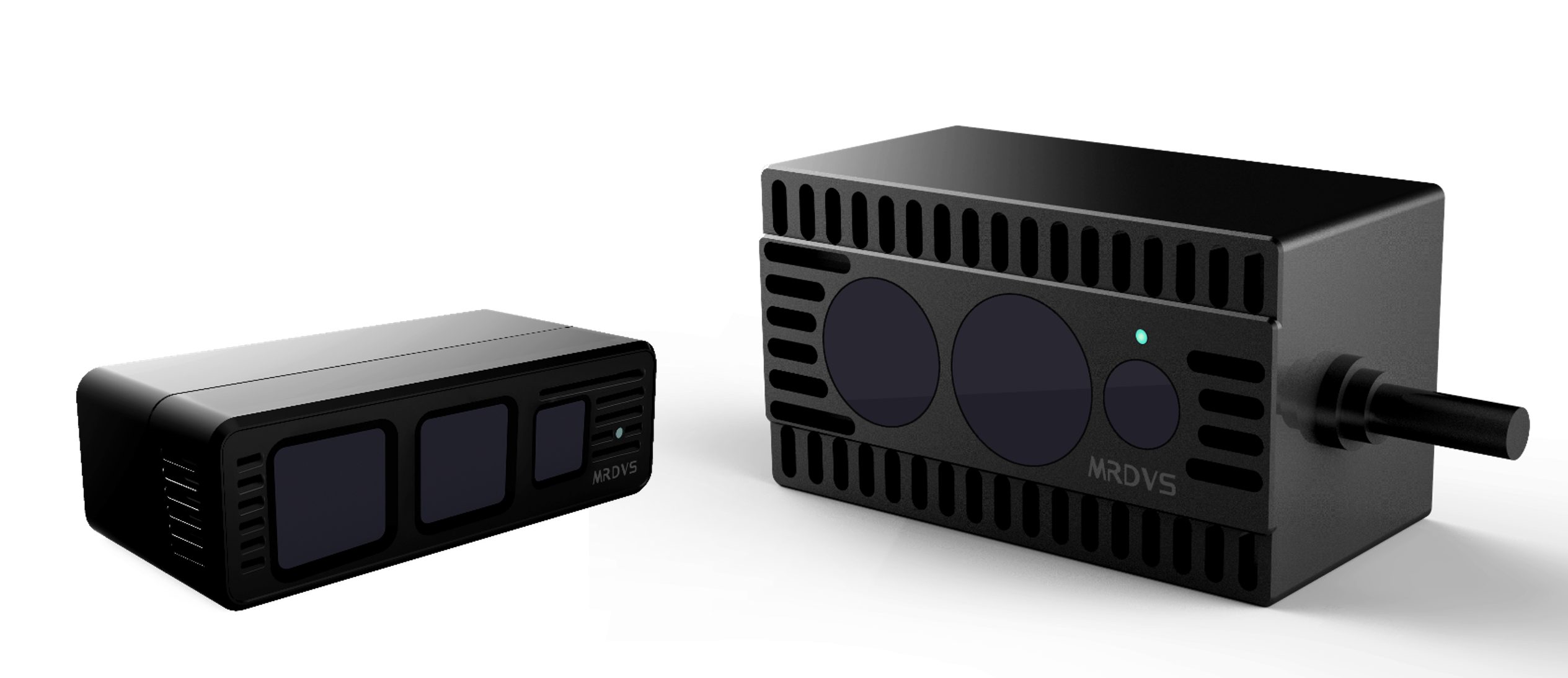An obstacle detection sensor is a device designed to identify and alert the presence of objects in the path of a moving robot or vehicle. These sensors are crucial for ensuring safe and efficient navigation, allowing robots to operate autonomously without human intervention.
For robotics enthusiasts, incorporating obstacle avoidance sensors is a game-changer. These sensors enhance robot performance, prevent accidents, and enable more complex tasks. From autonomous vehicles to drones and home robots, obstacle detection technology is a must-have for modern robotics.
In hospitals, robots can safely maneuver around medical equipment and personnel, ensuring timely delivery of supplies without causing disruptions or accidents.
Equipped with LiDAR and camera systems, autonomous vehicles can detect and respond to other vehicles, pedestrians, and road obstacles, ensuring safe navigation
In logistics centers, robots equipped with advanced sensors can navigate aisles, avoid obstacles like pallets and forklifts, and optimize inventory management.
In public spaces, service robots can provide assistance while seamlessly avoiding obstacles like furniture and people, enhancing user experience and safety.




Camera-based obstacle detection systems use visual data captured by cameras to identify and classify obstacles. These systems are commonly used in automotive applications, robotics, and various automated systems due to their ability to provide detailed visual information. The main types of camera-based systems include:
These systems use a single camera to capture visual information. They rely on image processing algorithms to detect and classify obstacles based on the visual data from one perspective
•Advantages: Cost-effective, simple to install, and can provide high-resolution images.
•Disadvantages: Limited depth perception and can struggle in poor lighting or adverse weather conditions
Stereo camera systems use two cameras placed at a fixed distance apart to mimic human binocular vision. By comparing the images from both cameras, the system can calculate the depth and distance of objects.
•Advantages: Better depth perception and more accurate distance measurements compared to mono cameras.
•Disadvantages: More complex and expensive than mono camera systems, and still affected by lighting and weather conditions.
These systems use multiple cameras arranged to provide a 360-degree view of the surroundings. They are particularly useful in environments where obstacles can come from any direction.
•Advantages: Comprehensive coverage and improved situational awareness.
•Disadvantages: Higher cost and complexity, and the need for sophisticated image stitching algorithms.
Depth cameras, also known as 3D cameras or depth sensors, capture depth information by measuring the distance between the camera and objects in the environment. They often use technologies such as structured light, time-of-flight (ToF), or stereoscopic imaging to generate depth maps.
•Advantages: Provide accurate three-dimensional information, allowing for precise distance measurement and obstacle detection. Effective in various lighting conditions and complex environments.
•Disadvantages: Increased computational requirements, and sensitivity to environmental conditions like bright sunlight or reflective surfaces.
Sensor-based obstacle detection systems use various types of sensors to detect obstacles by measuring physical properties like distance, speed, and size. These systems are often used in industrial, commercial, and automotive applications due to their reliability and accuracy. The main types of sensor-based systems include:
LiDAR systems use laser beams to measure distances by calculating the time it takes for the light to reflect off an object and return to the sensor.
• Advantages: Highly accurate distance measurements, capable of creating detailed 3D maps, and effective in various lighting conditions.
• Disadvantages: High cost and can be affected by reflective surfaces and environmental conditions like rain or dust.
Infrared sensors detect obstacles by emitting infrared light and measuring the reflection. They can identify objects based on the infrared radiation they emit or reflect
• Advantages: Effective in low light conditions and can detect heat-emitting objects.
• Disadvantages: Limited range and accuracy, and can be affected by environmental factors like fog or dust.
These systems use sound waves to detect obstacles. Ultrasonic sensors emit high-frequency sound waves and measure the time it takes for the waves to bounce back after hitting an object.
• Advantages: Cost-effective, reliable in close-range detection, and not affected by lighting conditions.
• Disadvantages: Limited range and accuracy compared to other sensors, and can be affected by environmental noise.
Selecting the right obstacle avoidance sensor depends on your project’s specific requirements. Consider factors like the environment where your system will operate, the types of obstacles it will encounter, and your budget. Here are some guidelines to help you make an informed decision:
• Size and Shape: For detecting small or irregularly shaped objects, high-resolution depth cameras or LiDAR might be necessary due to their precision.
• Advanced Navigation and Mapping: For more complex applications requiring detailed environmental mapping and navigation, LiDAR or depth cameras are better choices due to their high accuracy and ability to create 3D maps.
• High Budget: If cost is not a major constraint, investing in LiDAR or high-end depth cameras can provide precise and reliable obstacle detection. These technologies offer high accuracy and can handle complex environments.
• Medium Budget: Depth cameras are a good choice for those looking for a balance between cost and performance. They provide detailed 3D information and are more affordable than high-end LiDAR systems.
• Low Budget: For cost-effective solutions, consider using infrared or ultrasonic sensors, which are sufficient for simple obstacle avoidance tasks but may not be as accurate for more complex applications.
MRDVS, specialized in vision technology for mobile robots, launched the cost-effective RGB-D multimodal industrial-grade collision avoidance camera, the S Series. These cameras have been widely adopted in a variety of applications, including unmanned forklifts, stackers, lurking vehicles, tote carts, industrial cleaning robots, and medical and service robots.
Combining RGB and depth data enhances robot perception, enabling accurate navigation in complex environments.
Easily integrate with existing robot control systems via I/O interface, allowing for customization of avoidance parameters.
Identifies and classifies objects within the robot’s environment, enabling mobile robots to make informed decisions to navigate around obstacles.
Max. 18meters is supported and it can be used outdoors
Selecting the right obstacle avoidance sensor depends on your project’s specific requirements. Consider factors like the environment where your system will operate, the types of obstacles it will encounter, and your budget. Here are some guidelines to help you make an informed decision:

Featuring a depth resolution of 240 × 160, the S10 Pro and S10 capture depth and texture information in real time, delivering stable long-distance perception (up to 18 meters). Designed for low-speed unmanned vehicles, unmanned forklifts, drones, lawn mowers, and other devices, these products ensure reliable performance for a wide range of applications.
S10 Pro and S10 will be launched in Apr.

The S2 Max, featuring the advanced Sony IMX570 iToF sensor and registered RGB-D imaging, stands out in the S series. It offers a depth resolution of 320×240 at up to 15 fps and a comprehensive field of view of 81° x 61°. Utilizing 940nm VCSEL illumination, the S2 Max ensures safe and efficient depth perception. Its capability to output depth, RGB, and amplitude maps makes it ideal for obstacle avoidance in mobile robots.
©Copyright 2023 Zhejiang MRDVS Technology Co.,Ltd.
浙ICP备2023021387号-1